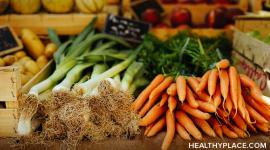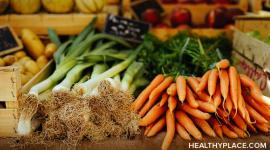Diet for ADHD Hyperactive Child and Inattentive Type

Diet for a hyperactive child should be considered when exploring ways to treat and manage the symptoms of ADHD. What you feed your child directly correlates with how his or her brain functions and brain function is hugely related to hyperactivity and inattention. There are certain ways to approach creating a healthy diet for a hyperactive child, as there are for creating a diet for ADHD inattentive type children.
Diet for Hyperactive Child
If your child suffers from ADHD and falls predominantly in the “hyperactive” category, then you are likely noticing some behavioral challenges. Maybe your child has difficulty sitting still or is disruptive in the classroom. Whatever the specific behaviors, what you feed your child could be contributing to hyperactivity. Thus, creating a healthy diet for hyperactive children is important.
- Switch to natural foods – processed foods are everywhere, and they contain a lot of dyes, additives, and sweeteners. These artificial flavors and colors promote an overactive nervous system, which can increase hyperactivity. A diet for a hyperactive child should be composed primarily of natural foods (Food Dyes and ADHD: Do Food Dyes Cause Hyperactivity?).
- Know the “calm foods” – food choices such as apples and bananas, which contain vitamins and minerals that assist in calming the nervous system. Berries are also a good choice, as they help stop cortisol (stress hormone) spikes.
- Watch what they eat before bed – many children like to have a snack in the evening. While there is nothing wrong with this, what you feed your child may be contributing to hyperactivity at night, and thus, a difficult sleep cycle. Steer clear of candy, sugary drinks, and ice cream (ADHD and Sugar: How Sugar Affects Your ADHD Child’s Behavior).
- Nix the caffeine – a diet for a hyperactive child should never include more than 45mg of caffeine (equivalent to a can of soda). Yet if you can rid his or her diet completely of caffeine, that is ideal (ADHD and Caffeine: The Effects of Caffeine on ADHD).
Diet for ADHD Inattentive Type Child
If your ADHD child struggles primarily with inattention, then he or she probably finds it hard to finish tasks, follow instructions, or process information. Of course you want to help your child manage his or her symptoms and identifying what possible dietary changes could be made is a great place to start.
- The Feingold diet – this is a well-known approach to a diet for an ADHD inattentive type child. Yet it is also somewhat controversial. Following the Feingold diet means eliminating all artificial additives. It also means eliminating salicylates (found in grapes, apples, almonds), and slowly re-integrating them, to check for any negative reactions (ADHD Elimination Diet: Food Sensitivities in ADHD Children).
- Try B vitamins, probiotics, and fish oil – many have found that increasing their child’s vitamin B, probiotic, and fish oil intake has resulted in positive changes. These supplements are known to help with mental focus and promote brain function, and because of this, are good additions to any diet for ADHD inattentive type children.
- Be aware of artificial sweeteners – aspartame, saccharin, and sucralose, to name a few, are artificial sweeteners found in many foods and drinks. Unfortunately, these sweeteners can contribute to memory loss and mental fogginess. Check the ingredients label to be sure you are not giving your child something that contains artificial sweeteners.
A diet for an ADHD inattentive type child may look slightly different than a diet for a hyperactive child. Nonetheless, understanding how your child’s current diet may not be serving him or her can help promote making beneficial changes to help you find the best diet for your ADHD child.
APA Reference
Jarrold, J.
(2021, December 20). Diet for ADHD Hyperactive Child and Inattentive Type, HealthyPlace. Retrieved
on 2025, December 5 from https://www.healthyplace.com/adhd/food-and-adhd/diets-for-adhd-hyperactive-child-and-inattentive-type



